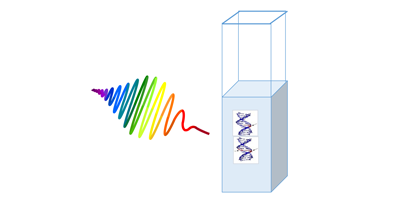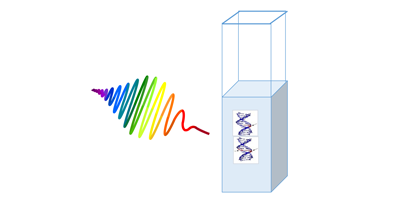DNA Damage from “Eye-Safe” Wavelengths
Lasers that emit at far-infrared wavelengths are often considered “eye-safe,” making them attractive for open-air applications such as laser radar, range-finding, and military targeting. However, new research may raise concerns about the safety of these long wavelengths. Experiments reported in Physical Review Letters show that femtosecond pulses from far-infrared lasers can cause breaks in exposed DNA strands.
Safety regulations for lasers are based in large part on protecting the retina from intense, focused light that can burn that sensitive tissue. At far-infrared wavelengths (greater than about nanometers), the light is mostly absorbed by water in the front of the eye, thus preventing it from reaching the retina. For this reason, acceptable laser power exposure is higher for far-infrared lasers than for visible and near-infrared lasers.
However, the threat from lasers is not limited to over-heating, but also includes photoinduced chemical changes. In a previous study, Deepak Mathur of the Tata Institute of Fundamental Research and his colleagues showed that laser pulses at 800 nanometers could cause “nicks” or breaks in DNA through the generation of free electrons and hydroxyl (OH) radicals in the surrounding water medium. They have now performed similar experiments with femtosecond (terawatt) laser pulses at and nanometers. After about minutes of exposure, analysis showed that roughly of the targeted DNA molecules had single-strand or double-strand breaks. The team found that they could reduce the damage by introducing “scavenger” molecules that deactivate hydroxyl radicals. From this, they surmise that the DNA damage comes primarily from rotationally “hot” OH molecules formed in the strong optical fields of the pulses. However, it remains to be shown whether these DNA-attacking hydroxyl radicals form at the lower powers found in commercial applications. – Michael Schirber





